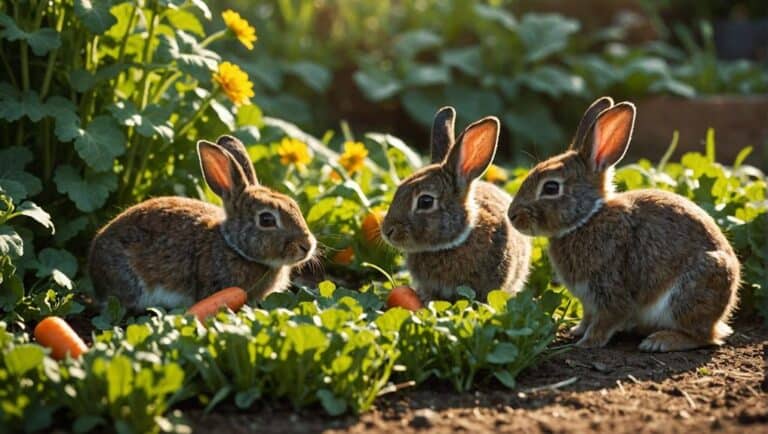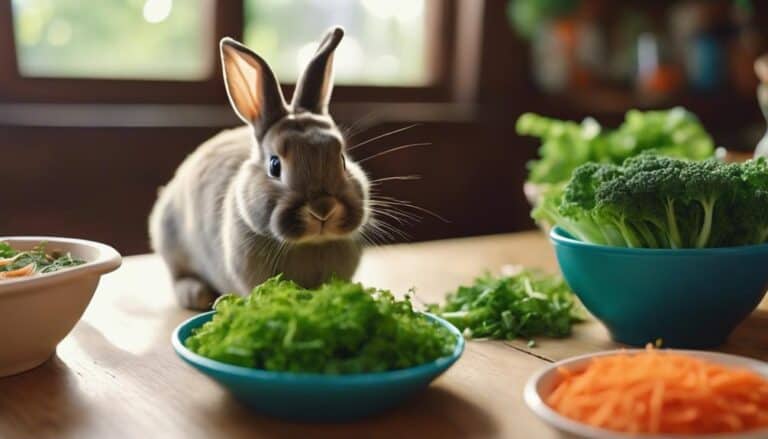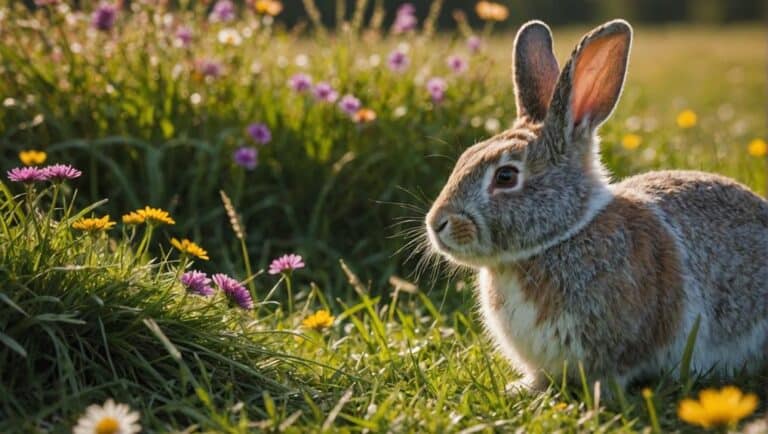You might find it interesting that just last week, a friend mentioned how their rabbit started refusing pellets, which often points to underlying issues with food quality. Understanding the key factors that impact rabbit pellet food—like ingredient composition and processing methods—can make a significant difference in your pet's health. It's not just about what's in the pellets, but how they're made and stored. If you want to guarantee your rabbit thrives, consider what you might be overlooking in their diet.
Contents
Ingredient Composition
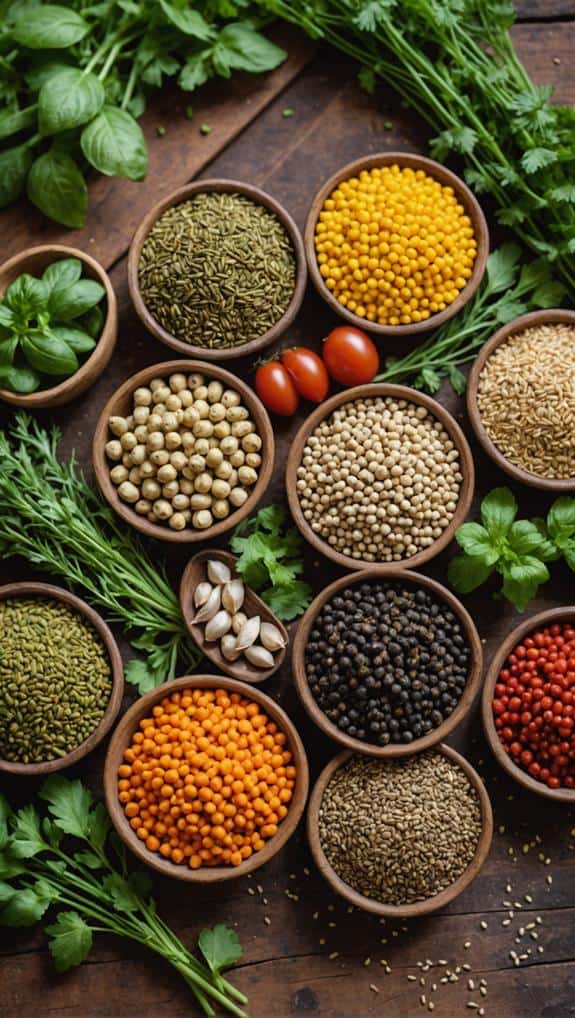
When selecting rabbit pellets, understanding ingredient composition is important for your pet's health. The nutritional content of these pellets directly influences your rabbit's well-being and longevity.
A balanced diet, including a high-fiber diet with hay or grass, is essential for maintaining healthy digestion and preventing obesity, as highlighted in the importance of a balanced diet. High fiber levels are significant; look for a crude fiber content between 14-20% to foster good digestive health and prevent obesity.
A good quality pellet primarily features hay or grass, like timothy hay, as the main ingredient. This provides important fiber and nutrients, avoiding fillers such as corn or soy that can disrupt a balanced diet.
Protein levels matter too; aim for pellets formulated with 13-16% protein to support growth and energy needs without risking health issues related to overfeeding. Additionally, consider pellets enriched with vitamins and minerals tailored specifically for rabbits. These added nutrients guarantee your pet meets its specific dietary requirements at different life stages.
Always opt for trusted brands that prioritize natural ingredients and avoid harmful additives, artificial colors, or excessive sugars.
Processing Methods
The way rabbit pellets are processed can greatly affect their nutritional value and palatability. Two primary methods exist: cold-pressing and extrusion.
Extrusion involves applying higher heat, which helps improve the nutritional digestibility of the pellets by gelatinizing starches. This process can enhance the availability of vitamins and minerals, although some nutrient loss may occur. In contrast, cold-pressed pellets are denser and often require molasses as a binding agent, making them harder and less appealing for rabbits.
The symbolism of bunnies, representing luck and prosperity, can resonate in the care of your rabbits by guaranteeing they receive high-quality nutrition through well-processed pellets.
The processing method considerably influences the texture of the pellets. Extruded nuggets tend to be softer, which may encourage rabbits to eat more readily.
Quality control during processing is essential. Selecting natural, high-quality ingredients guarantees that the final product maintains its nutritional integrity.
In your quest to provide the best for your rabbits, consider how the processing methods impact not only the nutritional value but also the overall enjoyment of the pellets. By understanding these factors, you can make informed decisions that promote the health and happiness of your pets.
Nutritional Balance
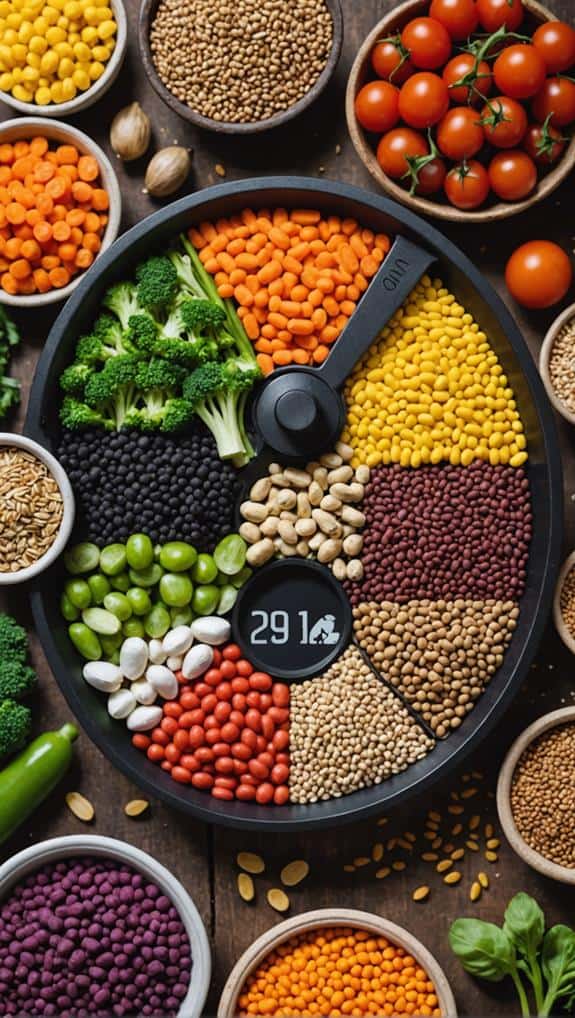
Achieving nutritional balance in your rabbit's diet is fundamental for their overall health and well-being. To guarantee this balance, rabbit pellets should contain 14-20% crude fiber and 13-16% protein. These percentages are essential for maintaining ideal health and preventing obesity.
Incorporating a variety of high-fiber hay and fresh greens daily supports this nutritional balance and enhances digestive health, as highlighted in transitioning to a healthy diet. When feeding rabbits, it's crucial to choose pellets formulated for their specific life stages, as nutritional needs vary greatly during maintenance, growth, and reproduction.
Quality ingredients are critical; look for pellets made from high-fiber plant sources and enriched with important vitamins and minerals.
Remember, pellets should complement a high-fiber diet mostly made up of grass hay and fresh vegetables, rather than serve as the primary food source. Continuous monitoring of your rabbit's pellet consumption is key.
Adjust portions based on their weight and health status to prevent nutritional deficiencies or excesses.
Freshness and Storage
Maintaining a balanced diet for your rabbit extends beyond just choosing the right pellets; freshness and proper storage play a noteworthy role in guaranteeing their health. To preserve the freshness of your rabbit's pellets, store them in a cool, dry environment. This minimizes moisture exposure, which can lead to mold growth and spoilage.
Moldy pellets pose serious health risks if ingested, so it's essential to regularly check for any signs of spoilage. Always use pellets before their expiration date to guarantee peak nutrient availability. Expired pellets can lose essential vitamins and minerals, which are important for your rabbit's well-being.
To avoid purchasing too many, buy pellets in smaller quantities that can be consumed within a reasonable timeframe. This practice helps reduce the risk of stale or degraded food.
Additionally, make it a habit to inspect your stored pellets for unusual odors, colors, or textures. Identifying potential spoilage early allows you to dispose of compromised food quickly, preventing any harm to your rabbit.
Avoiding Fillers and Additives
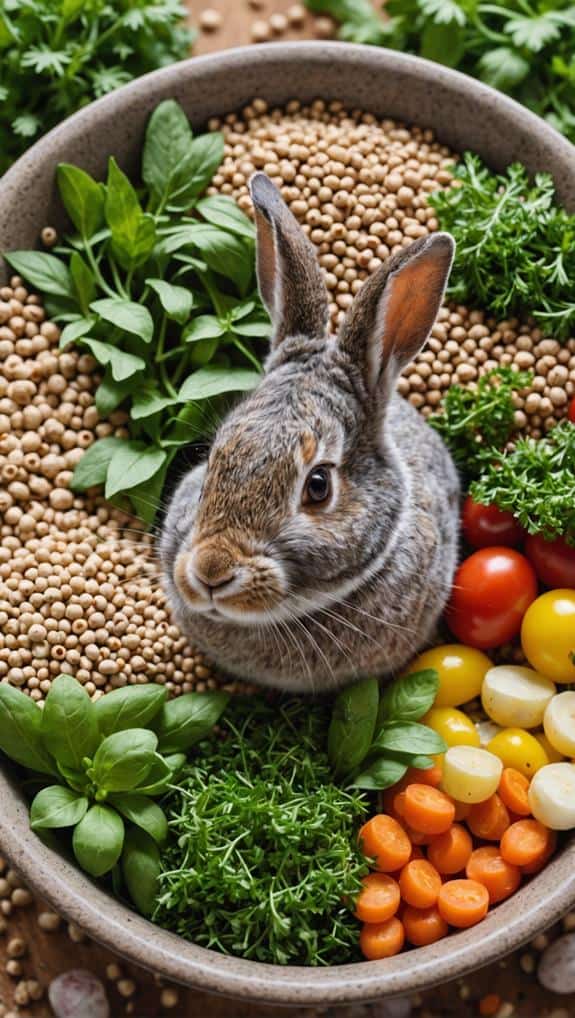
When selecting rabbit pellets, it's important to focus on avoiding fillers and additives that can compromise your pet's health. High-quality rabbit pellets should contain minimal to no fillers like corn or soy, as these ingredients fail to provide necessary nutrients and can lead to digestive issues in rabbits.
Instead, opt for pellets made with whole ingredients, particularly grass hay, which offers ideal fiber content essential for maintaining digestive health.
Additionally, steer clear of pellets containing sweeteners, fruits, or nuts, as these additives contribute to obesity and dental problems due to their high sugar content. Always check the ingredient list for stabilized vitamins and minerals; additives can degrade the nutritional quality of pellets over time, negatively affecting your rabbit's health.
It's also critical to choose pellets specifically formulated for rabbits, ensuring they meet the appropriate fiber levels (14-20%) and protein levels (13-16%) without unnecessary fillers.
Final Thoughts
In conclusion, choosing high-quality rabbit pellets hinges on understanding these five key factors. By focusing on ingredient composition, processing methods, nutritional balance, freshness, and avoiding fillers, you can guarantee your rabbit thrives. After all, wouldn't you want the best for your furry friend? Making informed decisions not only supports their health but also enhances their overall well-being. Prioritizing these aspects will help create a balanced diet that keeps your rabbit happy and healthy.

